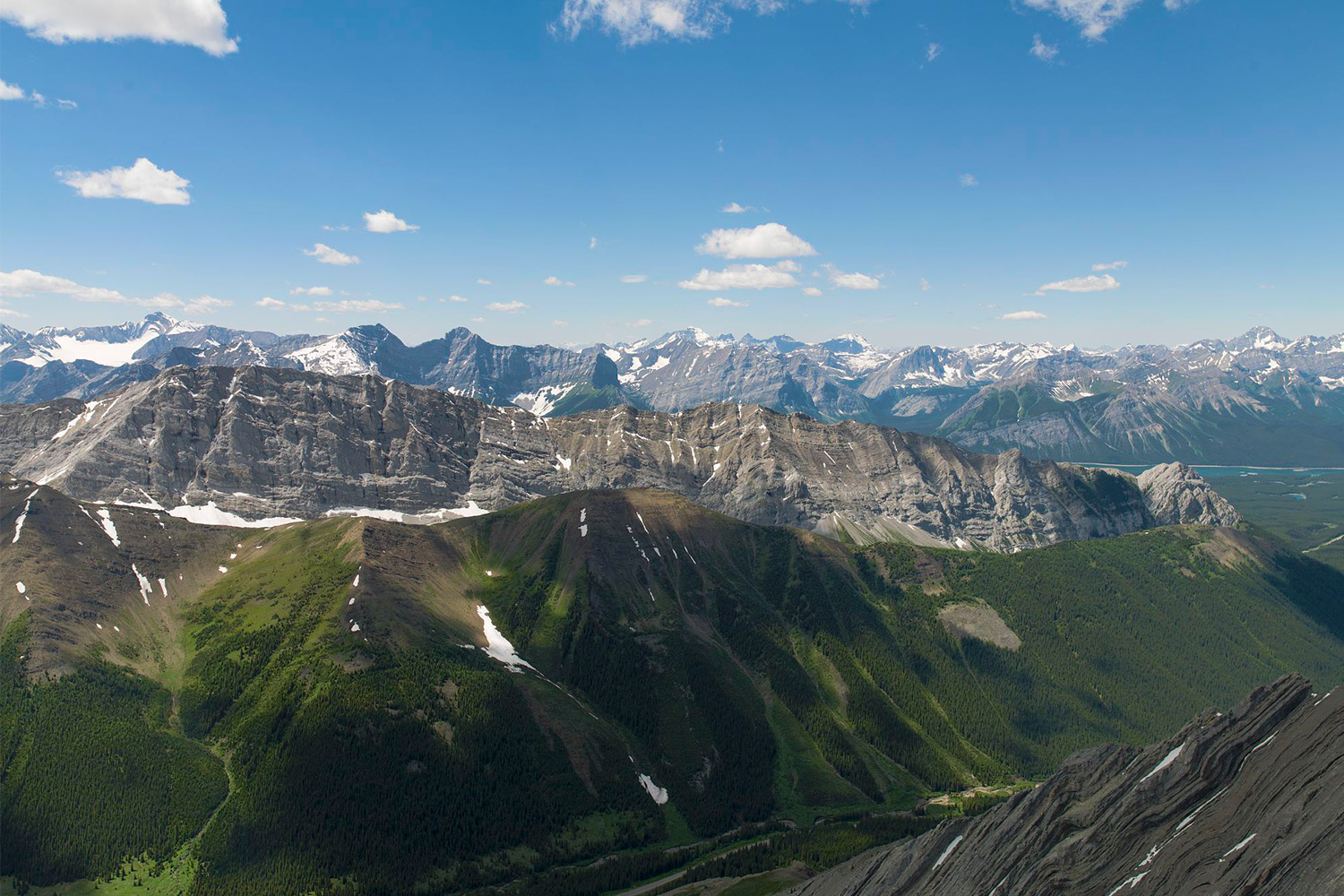
By Ben Williamson
Fire is a powerful force driving landscape change in Canada’s forests. But have foothills landscapes always been shaped by large, hot, stand-replacing fires? Recent studies suggest that these landscapes may have in fact been shaped by a more diverse, mixed-severity fire regime, but these differences can be difficult to measure. How can we observe processes that have occurred over centuries?
This is where Landscapes in Motion comes in. This project of the Healthy Landscapes Program at fRI Research brings together researchers from several fields, using different techniques as a window into the landscape’s past. They are striving to figure out when and where forests burned in the southern Rockies of Alberta, before Europeans started putting fires out and suppressed deliberate burning by Indigenous peoples.
The project has three teams working in concert to piece together the fire history of the southern Rockies. The Fire Regime Team, led by Lori Daniels (UBC), is collecting tree ring and fire scar data in the field to determine the ages of trees and the years they were burned. The Oblique Photo Team, led by Eric Higgs (University of Victoria/Mountain Legacy Project), is revisiting points where land surveyors photographed the landscape a century ago, and comparing contemporary photographs of the same landscape to see how it has changed. Finally, the Modelling Team, led by Eliot McIntire (Canadian Forest Service), is using advanced spatial modelling to connect the dots and figure out how wildfires have shaped the landscapes we see today. David Andison, the Program Lead of fRI Research’s Healthy Landscapes Program, is the Project Coordinator of Landscapes in Motion.
Visit https://www.landscapesinmotion.ca to learn more about this ground-breaking project, meet the team of researchers, and stay up-to-date as the project progresses. You can sign up for the newsletter to receive event announcements and news, or follow Landscapes in Motion on Twitter. We invite you to join us as we endeavour to discover the origins and stories behind the landscapes of the southern Rockies of Alberta.






